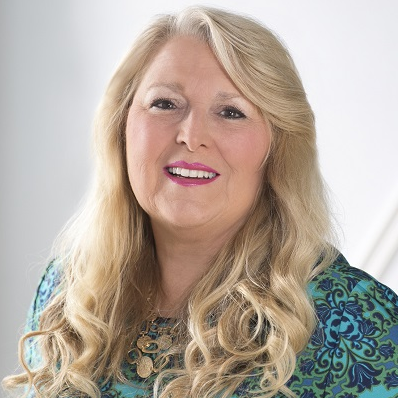Webcast Agenda
We will be webcasting this conference live. The webcast will be available as an on-demand recording within seven business days after the event has concluded. You can purchase the webcast here: Purchase Webcast.
MAIN CONFERENCE
Thursday, Aug. 2
Creating (and delivering) an integrated message through executive communications
Delivering a consistent message to a corporate audience can be a challenge, but it offers an enormous opportunity for any organization to tell a story at each and every point of contact. At Dell, Rebecca Paquette, senior consultant, executive communications, sees executive and corporate communications as a cornerstone to a fully integrated communications program that spans marketing, sales, PR, AR, social media and everything in between.
You’ll learn how to:
- Craft executive communications that align with your corporate story across vast geographies and internal/external channels
- Articulate clear organizational strategy and priorities
- Use user-generated content (UGC) to gain buy-in and accomplish your objectives
- Make use of a variety of communications media and vehicles to reinforce your message
Secrets of success: How Cape Cod Healthcare used the latest tools to become a prominent publisher
You’ve learned how to create or update your content strategy. Join this session to find out how to apply these principles in real-world ways that drive clicks, traffic and ROI. You’ll hear how Cape Cod Healthcare recently launched its digital platform for health content and then integrated that content across every platform at its disposal, from text and video to social media and advertising—and a few new channels it created. Join this instructional session based on this phenomenal case study to replicate that omni-channel content strategy success at your own organization.
You’ll learn how to:
- Build a brand journalism site that reaches broad audiences without relying on mainstream news outlets
- Integrate your brand journalism content on your principal home page and related sites
- Revamp your intranet to deliver content to employees—and encourage them to share it on their social media networks
- Launch social media channels to support your corporate storytelling—and to reach wider audiences where they live
- Coordinate storytelling with a broad-based advertising and marketing campaign
- Enlist third-party partners, paid and unpaid alike
- Add video to your content mix without breaking your bank
- Develop and launch a magazine for audiences that still value—and prefer—print
Audience first: Answering ‘What’s in it for me?’ in internal and external messaging
Communicators know: The hard sell is rarely the answer to an effective long-term engagement strategy. Avoiding the “unsubscribe” button and overcoming general apathy require a measure of audience-centric writing. Sean Brown, director of communications and external relations at McKinsey, lends his decades of experience in engaging internal and external audiences in this interview discussion.
You’ll learn how to:
- Ask “what’s in it for me?” to find your readers’ needs—and then meet them
- Find a regular cadence with audience emails that provide real value
- Share tips that encourage audiences to come back for more
- Reframe messages to invigorate staff and clients alike
Storytelling That Resonates When Various Stakeholders Are Mixed
Communicators often must ensure they are reaching an array of stakeholders. Sometimes, we are directing our messages to investors when consumers are a key audience; often we must communicate to both. Whether your messaging is broad or narrow, understanding how to engage with key audiences is essential. Learn from experts covering investor, government, consumer, technical and media audiences to tailor your messages and communicate to optimum effect.
You’ll learn how to:
- Prioritize the primary audience of your company or product message
- Balance messaging to account for various stakeholders
- Map out your communication campaign
- Share solutions to common messaging challenges
- Persuade your management team to think broadly across the audience mix
Avoiding #PRFail: PR tips from a journalist
As a marketing or PR professional, your job is to promote your client’s work, product, or brand – and you often need the media to help you do it. But how do you get your pitch in front of the right people, and how can you improve your chances of getting journalists to engage with you and your client? In this session, Lylah M. Alphonse, managing editor for government rankings and news at U.S. News & World Report, shares tips gleaned from more than 25 years of being on the receiving end of thousands of press releases and tells you what you need to do to get noticed – and what you should avoid doing at all costs.
You’ll learn how to:
- Make sure you’re reaching out to the right people
- Tweak your press releases to generate the right kind of interest
- Avoid the pitfalls that undermine your pitch and your client
- Develop a better relationship with the journalists you want to work with
- Build up your client’s brand by offering them as a source
Pitch tank: Pitch our panel of journalists and see if your story sinks or swims
Whether you write internal- or external-facing content, there is always a gatekeeper to woo between your work and the page (or webpage). The Pitch Tank is a safe environment for testing your pitching acumen and getting real-time feedback on the strengths and weaknesses of your work. (You might even get your piece placed.)
You’ll learn:
- How to frame your story for the publication or stakeholder you’re pitching
- Powerful subject lines and hooks that keep your message out of the trash bin
- Do’s and don’ts of interacting with journalists
- Ways to sway gatekeepers into accepting your content and keeping it as intact as possible
Simplifying complex topics to make difficult subjects more understandable for all the audiences you need to reach
Most corporate communicators have encountered the joy of writing about technical, abstract or otherwise hard-to-understand topics. Often they are the translators between engineers, doctors or researchers and the laypeople who constitute their audience.
From this panel, you’ll learn:
- How to communicate with specialized, scientific, technical people to find the story you need
- Techniques for distilling complicated concepts into easier-to-understand stories
- How to strike a balance between overly technical language and “talking down” to an audience
- Ways to match your content to the audience’s needs
Writing and editing to engage: Delivering compelling campaigns
What do you do when you have to develop creative content to support your company mission or business objectives? Once you have your idea, what steps do you take to ensure it is well-written?
Join this session to hear how you can engage employees with compelling writing and captivating campaigns. Vanessa Charles, manager, internal communications and functions at Boston Scientific will share best practices and lessons learned from her experiences.
You’ll learn how to:
- Match employee campaigns to mission and business objectives
- Use storytelling to deliver interesting content that inspires and engages employees
- Apply simple editing and proofing techniques, and more
Don’t be boring! Pro tips for writing about even the most mundane topics
Most communicators have covered a tedious topic at one time or another. Whether it’s a corporate ribbon-cutting or the launch of a highly technical product, these pieces are often as much of a burden to write as they are to read. What’s a corporate storyteller to do with those assignments? In this session, JoAnna Klein, a contributor to The New York Times’ Trilobites series, shares her tips for writing dynamically about topics that others might never think could be interesting.
You’ll learn how to:
- Find interesting stories from challenging and downright dull topics
- Discover stories on unfamiliar subject matter through careful research
- Challenge editorial standards and persuade leaders to take smart risks
- Infuse fun into corporate writing without sacrificing professionalism
- Make the technical fully accessible—without talking down to your audience
















